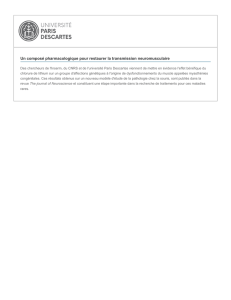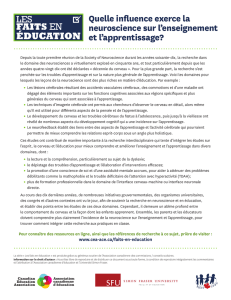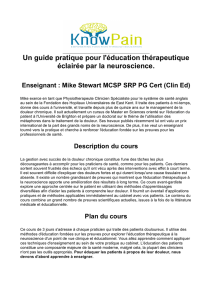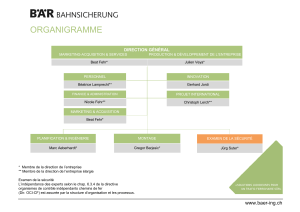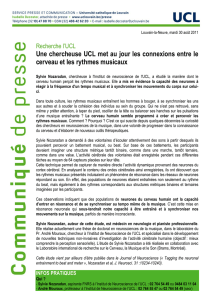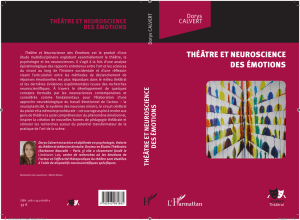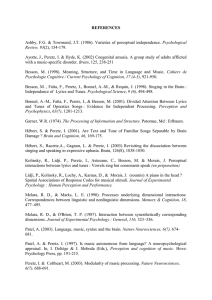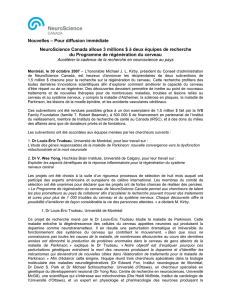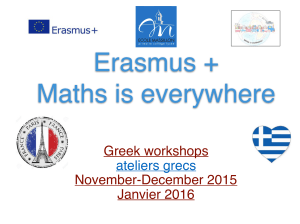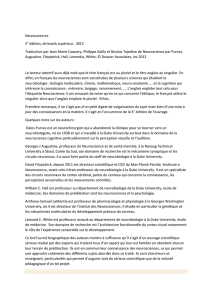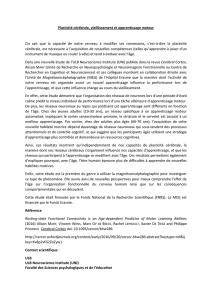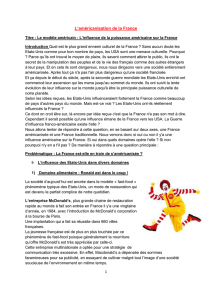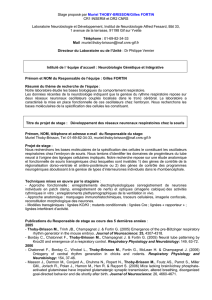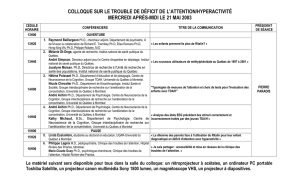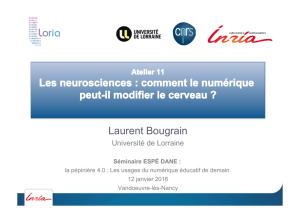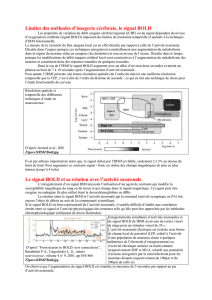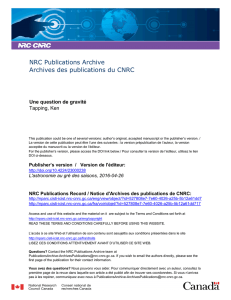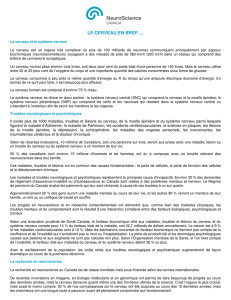leçon 2 Neuroscience du rythme.pptx
publicité
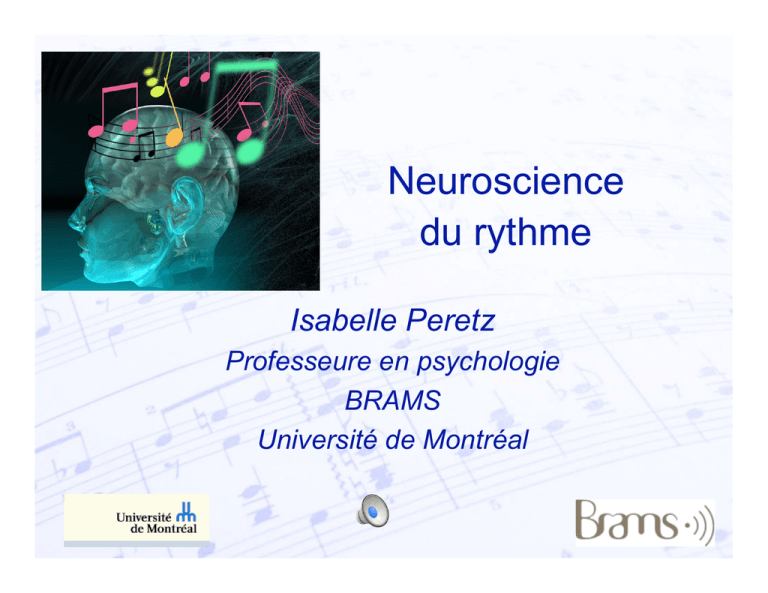
Neuroscience du rythme Isabelle Peretz Professeure en psychologie BRAMS Université de Montréal Psychologie du temps, PUF, 1967. Psychologie du rythme. PUF, 1974 Rhythm and tempo, The psychology of music, 1982 Paul Fraisse 1911-1996 Fraisse & Voillaume, 1971 Fraisse & Ehrlich, 1955 Dancing transcends time, place and culture La danse: Depuis les temps ancestraux Universel Spécifique aux espèces vocales Fondée sur la perception innée de la pulsation La danse comme instrument de séduction Darwin 1809-1882 Brown et al. (2005) Nature La danse des perroquets Seulement chez les espèces vocales Non spontané: la synchronisation pourrait être un dérivé de la sélection naturelle de l’imitation vocale Dû à la modification des circuits neuronaux pour permettre la coordination auditive-vocale fine ? Patel et al. (2009) Current Biology; Schachner et al. (2009) Current Biology Courtoisie de Petri Toivianen tapping bouncing Bouncing: whole body movement Jessica Phillips-Silver Petri Toivianen U. Of Jyväskylä Sylvie Nozaradan Phillips-Silver, Toivianen, Nozaradan & Peretz, in progress Body beat corresponds to point of maximal downward velocity: -periodicity of body movement -phase locking of movement to music Two conditions / 2 tempi: merengue song (64 beats) metronome Periodicity Bouncing vs. tapping The Montreal Battery of Evaluation of Amusia (MBEA) 6 tests (30 essais par test) Incidental memory recognition 96.7 Mathieu % R.C. contour scale intervals 79.2 83 80 rhythm 90 meter 66.7 Normal subject Mathieu Mathieu// metronome Is she dancing on time with the beat ? une nouvelle forme d’amusie congénitale Un accident cérébral peut compromettre la perception du rythme et de la mélodie sélectivement (double dissociation) Chez l’amusique « tone-deaf », les problèmes de rythme seraient la conséquence du trouble mélodique (Foxton et al., 2006) Tone-deafness: très variable en « tapping » Dalla Bella & Peretz (2003) Annals of the NYAS Another case of tone-deafness Emilie Maîtrise en sciences infirmières Age: 59 The Montreal Battery of Evaluation of Amusia (MBEA) 6 tests (30 essais par test) Incidental memory recognition 66.7 Emilie % R.C. contour scale 63 53 intervals rhythm meter 53 63 73 Periodicity: interference of pitch variations Proportion of body beats within +/-10% of music beat period Émilie 2 Matched Controls * Peretz & Coltheart (2003) Nature Neuroscience Beat perception • Présent à la naissance • Automatique Peretz & Coltheart (2003) Nature Neuroscience Beat finding / fine auditory-motor coupling Bouncing synch judgments Zatorre et al. (2007) Nature Neuroscience Review Grahn & Brett (2007) Journal of Cognitive Neuroscience Chen, Penhune & Zatorre (2008) J. Cognitive Neuroscience Chen, Penhune & Zatorre (2008) J. Cognitive Neuroscience Brain regions modulated by metrical organization Pre/supplementary area Dorsal premotor cortex Inferior parietal lobule Dorsolateral prefrontal cortex cerebellum + basal ganglia Beat finding / meter analysis Bouncing synch judgments Génétique: Genes AVPR1a and SLC6A4 Bachner-Melman et al. (2005) PloS genetics Influence de l’environnement (langage) ? A key difference [between music and speech] is temporal periodicity, which is widespread in musical rhythm but lacking in speech rhythm (p.177) Testing over internet Mélanie Provost Amusie congénitale: du comportement aux gènes phenotype Pitch-based deficit (tone-deaf variant) Beat perception deficit (beatdeaf variant) Neural phenotype impoverished connectivity in a right-hemisphere based network involving the inferior frontal cortex and the auditory cortex (ventral pathway) Reduced connectivity along the dorsal pathway? Genes Unknown Questions en suspend et perspectives nouvelles Problème de « awareness » Comparaison musique et langage (Lidji, en cours) Corrélation chant et danse Synchronisation sociale (mutuelle; Kirshner & Tomasello, 2009, J. of Experimental Child Psychology ) Synchronisation et cohésion sociale (Wiltermuth & Heath, 2009, Psychological Science) Pour plus d’information www.brams.umontreal.ca/peretz Et l’aide financière:
